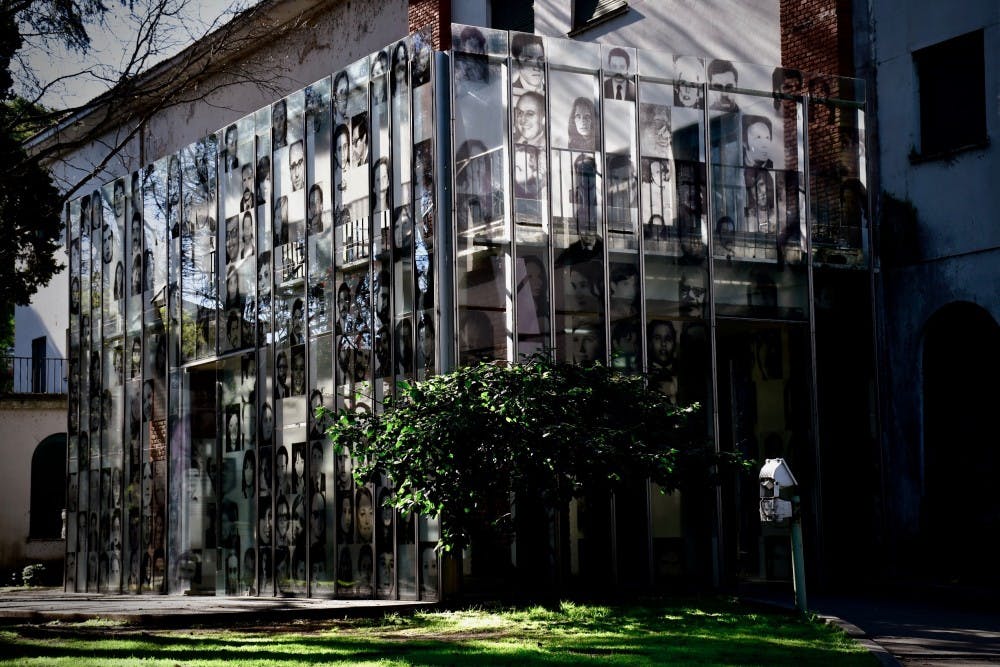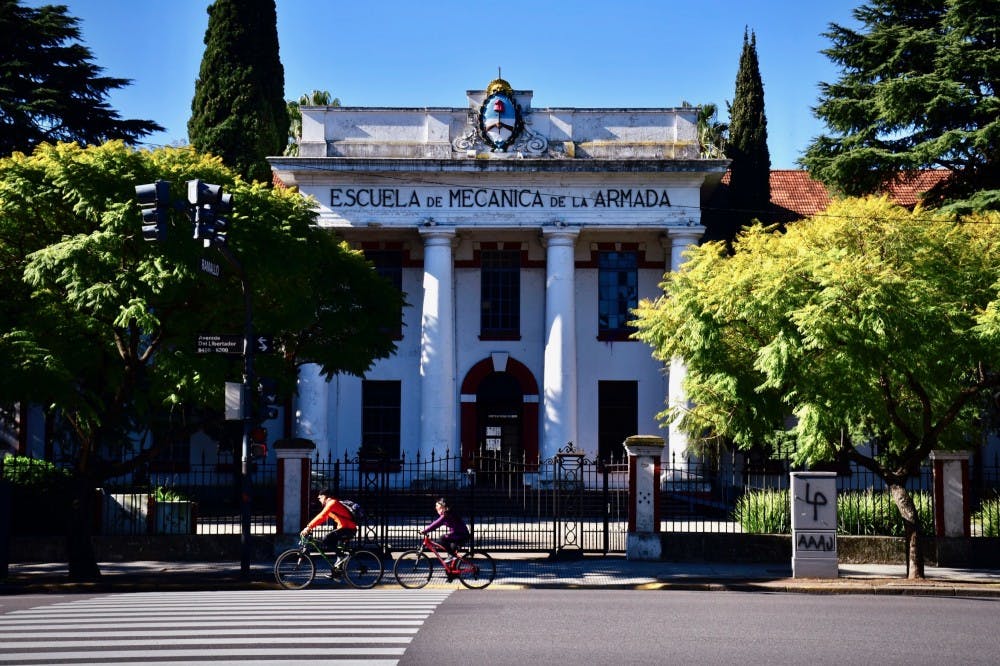DISPATCH
BUENOS AIRES, ARGENTINA | August 30, 2019
ESMA lies among leafy streets and luxurious high-rises. On three sides, residential towers soar above the abandoned barracks, where aspiring naval officers once studied; a busy highway completes the fourth. Prisoners detained there in the 1970s could determine where they were, even from windowless cells, by listening to passing cars, children walking to school, and the nearby train. Indeed, ESMA belongs to its surroundings.
Founded in 1928, the Higher School of Mechanics of the Navy (ESMA, its acronym in Spanish) was the largest detention and torture site under Argentina’s infamous military junta (1976 –1983), which “disappeared” some 30,000 Argentinians at more than 400 clandestine detention centers. The regime’s “Dirty War” targeted students, activists, militants, and journalists, a disproportionate number of them Jewish. At ESMA alone, the junta detained some 5,000 people. Fewer than 200 survived.
More than a decade ago, the Argentine government converted ESMA into a Space for Memory and Human Rights, to document and reveal the junta’s crimes of state-sponsored terrorism. The grounds feature monuments to the disappeared and the Mothers of the Plaza de Mayo, who courageously demanded news of their abducted children. The former Officer’s Mess, the building in which detainees were imprisoned and tortured, houses the searing ESMA Memory Site Museum.

Narrow windows on the uppermost floor of the Officer's Mess. In summer, the space was sweltering; in winter, frigid.
Photo Credit: Jon Ort / The Daily Princetonian
The Officer’s Mess has been preserved as it was found, half-rotted and derelict. The paint has peeled; the walls are cracked. The austere tile floors, bathroom counters, and staircases are original. At every turn, the visitor is an arm’s-length from crossbeams and girders, window frames and sink basins that witnessed horrific crimes.
The museum’s claustrophobic intimacy confounded me. Both detainees and captors inhabited the Officer’s Mess, in startling proximity to one another. Yet, rather than engender compassion, such close quarters gave rise to heinous cruelty.
To enter the building, I passed through a glass pavilion with the faces of the disappeared etched onto its panes. On the fourth floor I walked along an elevated platform, a foot above the crawlspaces where detainees were forced to lie. Five floors below, I entered a cavern of concrete pillars, where officers perpetrated appalling acts of torture, such as electrocution and waterboarding.

The glass entrance to the Officer's Mess, with faces of the disappeared.
Photo Credit: Jon Ort / The Daily Princetonian
“Being Women at ESMA — Revisiting Testimonies,” a temporary exhibit on display since March, explains that women detainees faced unique abuses, including sexual assault. In a cruel irony, they were sometimes forced to dine at restaurants with their captors. The infants of women who gave birth at ESMA, whether from prior pregnancy or rape, were illegally given to other families.
More than ninety percent of the prisoners held at ESMA were “transferred,” a sinister euphemism for murder. Most “transferees” were drugged and dropped from aircraft — unconscious, but still alive — over the ocean, on so-called death flights. On my first visit to ESMA, I spoke with a journalist who recalled, as a boy in the 1970s, discovering the corpses of victims that had washed ashore on beaches south of Buenos Aires.


In a room on the fourth floor, a quote from a survivor’s testimony: "How was it possible that children were born in this place?"
Photo Credit: Jon Ort / The Daily Princetonian
To perpetrate such exterminatory violence, the guards denied detainees their humanity. Prisoners were only known by assigned numbers. When moved between floors or tortured, they suffocated under burlap hoods, which further shrouded their identities.
Within Argentina, silence has largely cloaked the trauma inflicted by the junta. The Mothers of the Plaza de Mayo have become embroiled in political scandal, and remembrance efforts are generally contentious. The Argentinians I met were reluctant to discuss, much less acknowledge, places like ESMA. Upon learning of my visits there, a coworker remarked, “Why would you go? You’ll see things you don’t want to.” An acquaintance derided the museum as “Communistic” and “made-up.” Someone else observed, “You must really like victims.”
The U.S. government has never fully recognized its own terrible complicity in the human-rights abuses of Argentina’s junta, a vague apology delivered by President Obama in 2016 notwithstanding. Under both Democratic and Republican administrations, Washington encouraged right-wing autocrats across South America to persecute anyone presumed to pose a leftist threat. ESMA, and innumerable other atrocities, ensued.
Yet, denial of the truth, whether uttered in a Buenos Aires bar or issued by the White House, cannot negate the historical proximity of the junta’s crimes — a reality I grasped after four visits to ESMA. The site is neither remote nor removed. Rather, the violence committed there has seeped into the surrounding city. Soldiers often abducted civilians from public spaces, such as bus stations and street corners. The disappeared could have been anyone. ESMA throbbed to the pulse of everyday life.
Even within the Officer’s Mess, I was engulfed in the bustle of Buenos Aires. I could hear the rumble of passing trucks, and the few windows offered glimpses of apartment blocks. I imagined that the people living there could look back and behold where I was.
Follow Jon on Twitter @ort_jon.
Editor’s Note: The Prospect is thrilled to debut a new series, “Dispatches,” in which ‘Prince’ staffers reflect on their travel and work experiences over the summer. Whether close to campus or across the globe, our staff are gaining new perspectives and insights, and we are delighted to share some of them with you.









